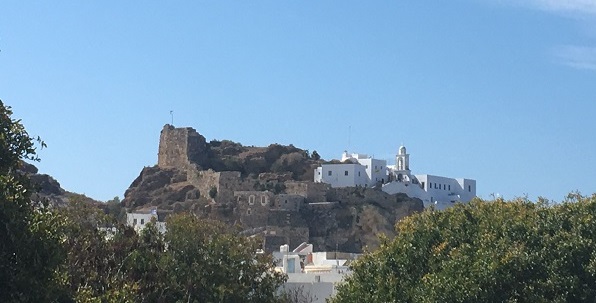
After exploring the island’s active volcanic caldera, Thor and I cool off in the shady lanes of Mandraki village.
NOTE: Since our recent trip to Greece to research more settings for my novel-in-progress, THE ARIADNE DISCONNECT, Thor and I knew we had to return to this magical region. My first entry in this new blog series posted here on Saturday, 10/20/2018. It gives an overview of our rambles from Athens to seven islands in the Dodecanese and Cyclades groups, ending our ferry-hopping pilgrimage on the anciently sacred island of Delos.
Join the cat contest! As I’ve shown in many of my previous blog posts, the Greeks love their cats, including many feral felines wandering freely, and people put out water bowls and kibble for them. (There are some efforts now underway to start sheltering/neutering programs.) Mandraki abounded in the furry critters, so if you want to enter for a chance to win an ebook copy of my novel THE ARIADNE CONNECTION, just count the cats in the following photos and email me at sara@sarastamey.com
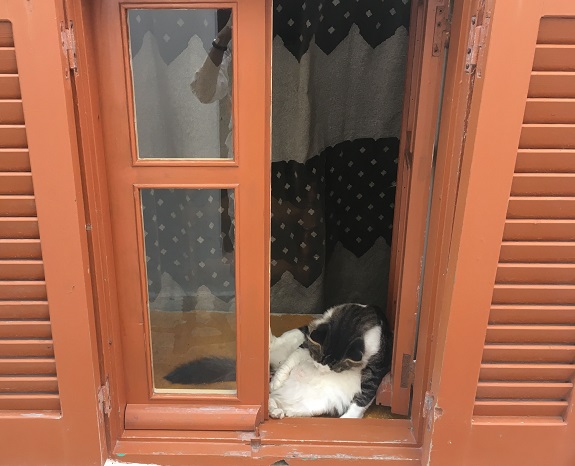
This small island with its rich volcanic soil has been settled for thousands of years, including a stint by the Mycenaeans 3,000 years ago, and later occupation by the Knights of St. John who built the castle in the top photo around 1315 A.D. The whitewashed monastery was added around 1600 A.D. These days, most of the intricate agricultural terracing is abandoned, though the approximately one thousand remaining islanders still harvest citrus, almonds, and olives from their trees. As Thor and I wandered the cobbled lanes of the village, we enjoyed the cool sea breezes.
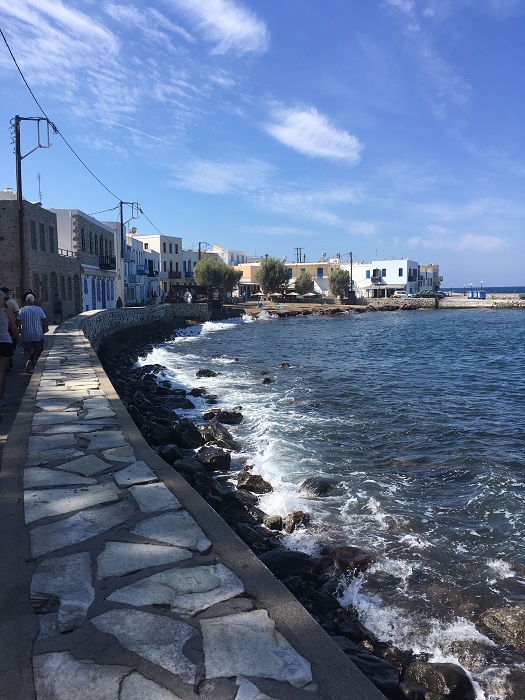
These pieces of an antique olive press testify to the island’s bounty.
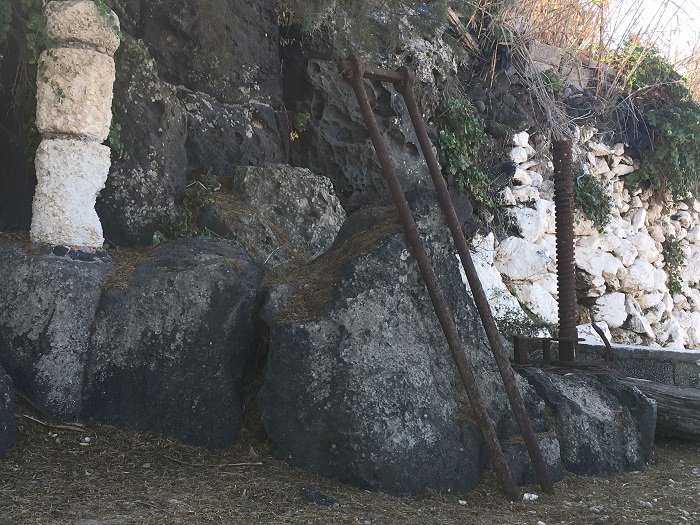
The village also features a wealth of the traditional Aegean white-and-black pebble choklakia mosaic designs.
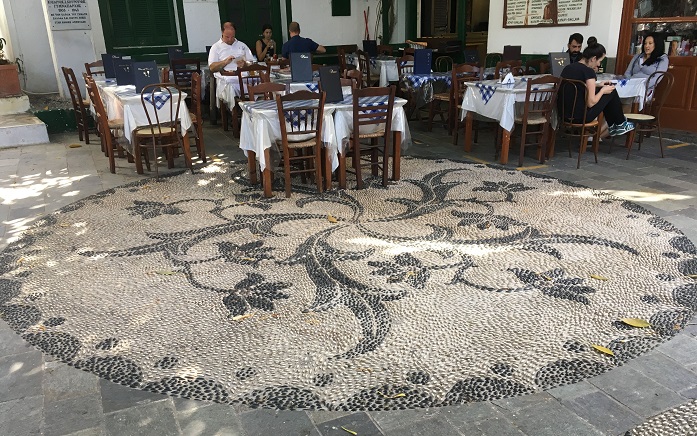
In the tightly-packed labyrinth of buildings, the gardens are in pots.
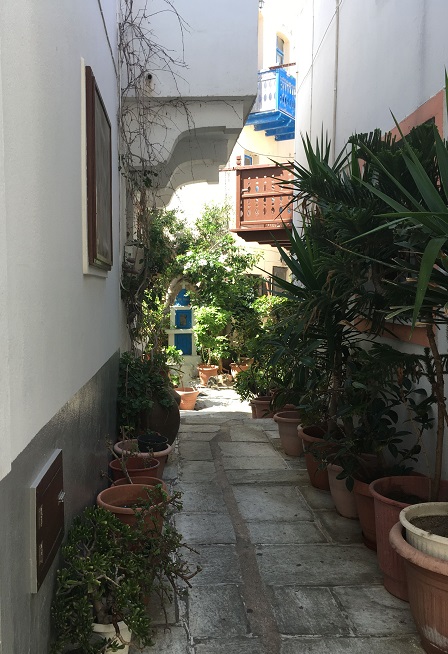
No shortage of the traditionally blue-and-white-painted houses….

…but the islanders have expanded their color palettes.
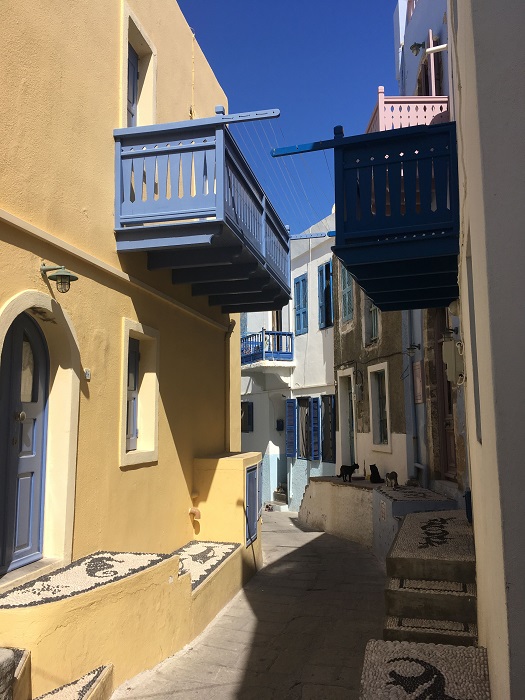
If that lane looked narrow, try this one. Obviously, the only motorized vehicles that can navigate these passages are the ubiquitous scooters.
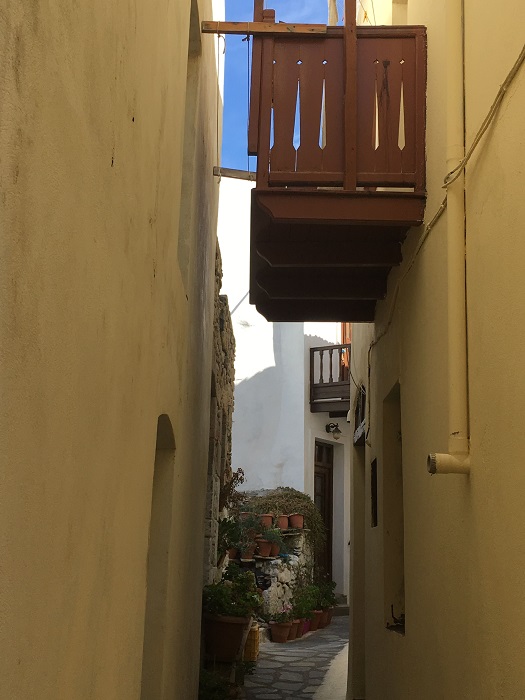
Of course, there are tiny Greek Orthodox chapels tucked in among the houses, with icons and lighted candles, open to all.
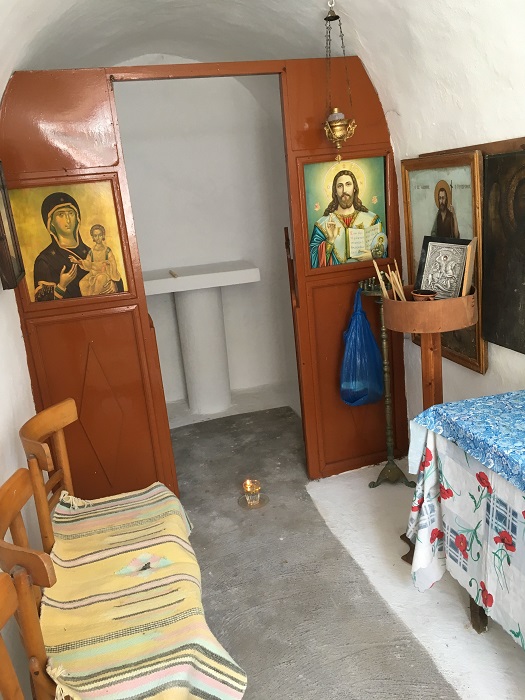
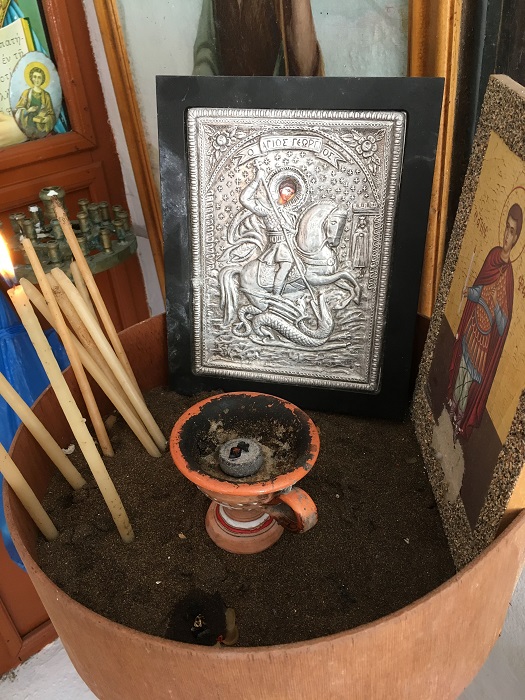
One thing we didn’t expect to see was this posted casting call for a film to be made locally. Any translations welcomed!
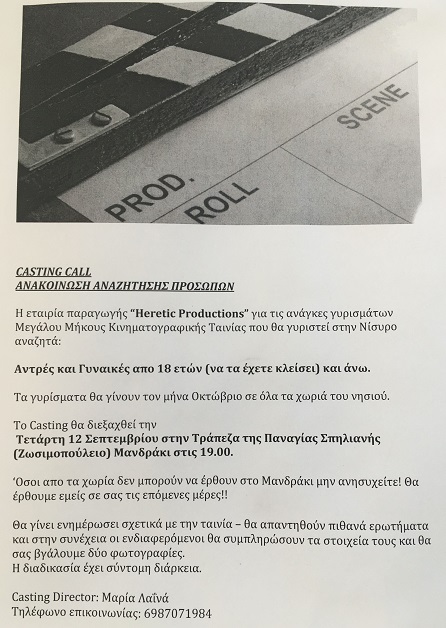
Rounding a turn, we looked up to see another view of the castle and monastery, revealing the common practice of utilizing the many Greek caves as part of structures.
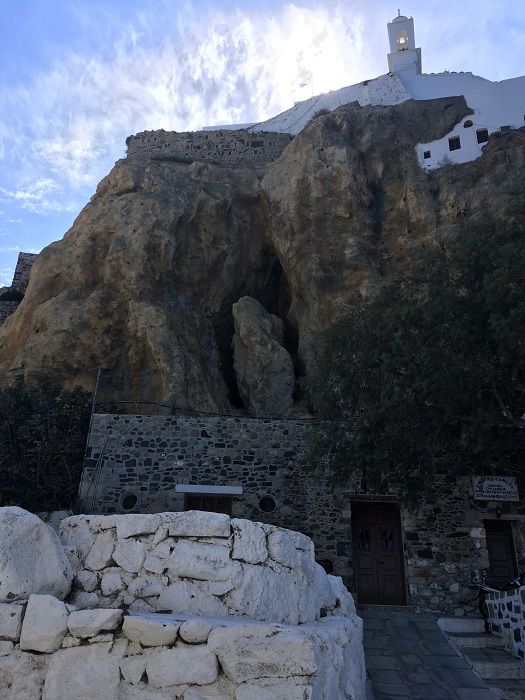
We wandered on, in search of lunch, enjoying the splashes of color.
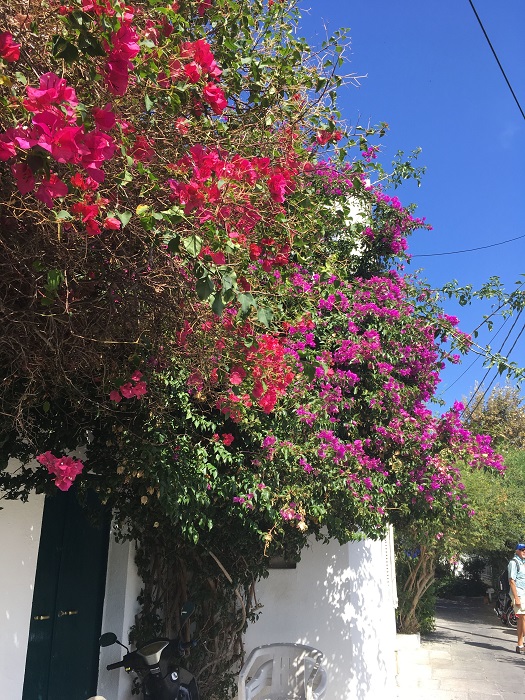

Aha! A pretty cafe beneath a spreading shade tree, showing off its choklakia.
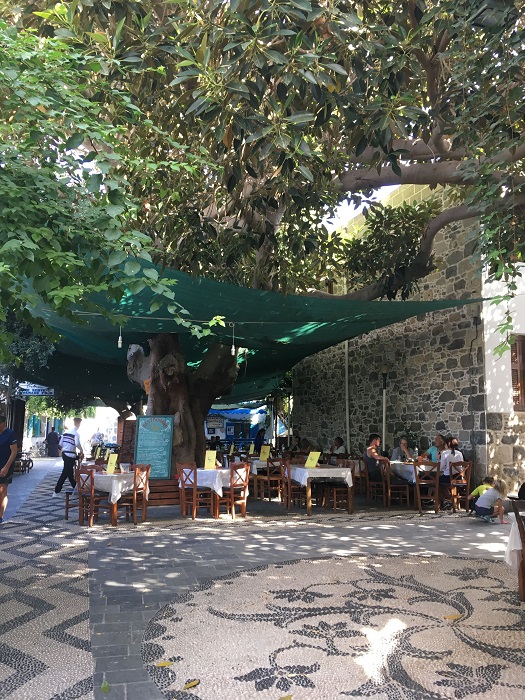
Hungry kittens found us and other diners to beg for scraps.
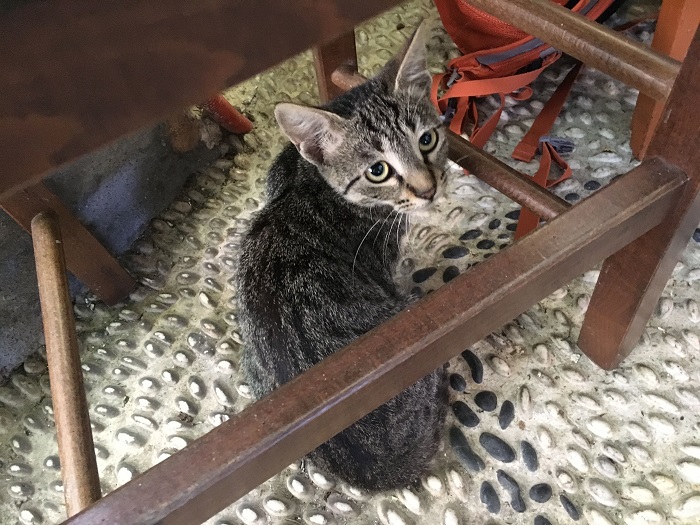
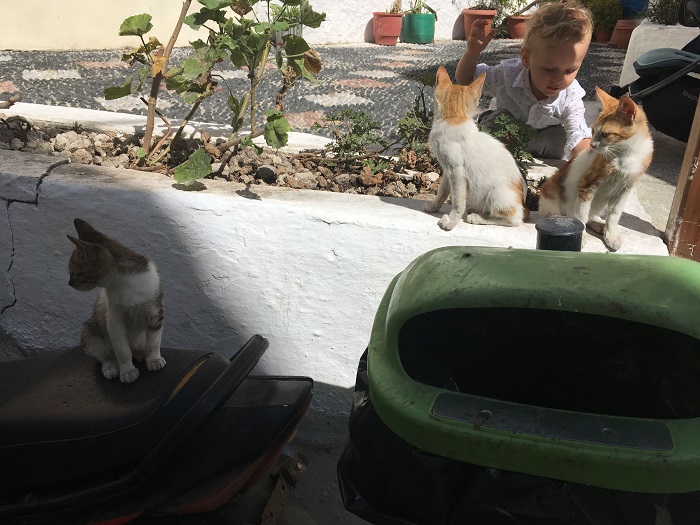
Since we hadn’t seen lucky dolphins on the boat ride, we had to settle for this mosaic:

Back on the boat, we returned to Kos. The “pirate” ships at the harbor take their plunder from tourists these days.
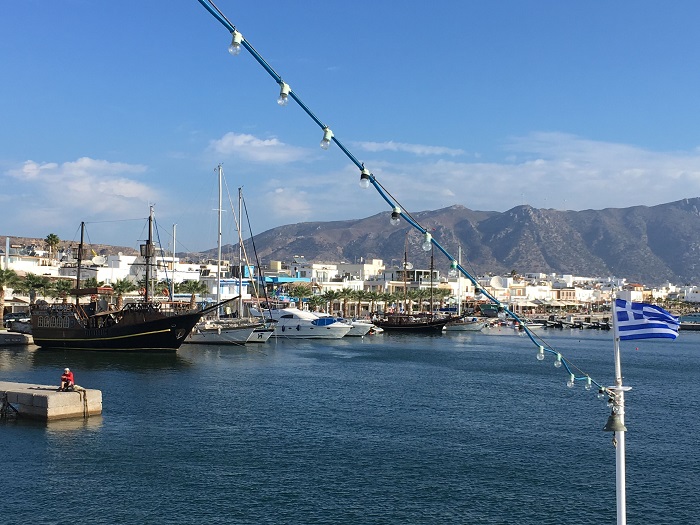
Next week: Around and about on Kos.
*****
You will find The Rambling Writer’s blog posts here every Saturday. Sara’s latest novel from Book View Cafe is available in print and ebook: The Ariadne Connection. It’s a near-future thriller set in the Greek islands. “Technology triggers a deadly new plague. Can a healer find the cure?” The novel has received the Chanticleer Global Thriller Grand Prize and the Cygnus Award for Speculative Fiction. Sara has recently returned from another research trip in Greece and is back at work on the sequel, The Ariadne Disconnect. Sign up for her quarterly email newsletter at www.sarastamey.com

1 thought on “The Rambling Writer Explores More Greek Islands, Part 19: A Village on Nisyros”